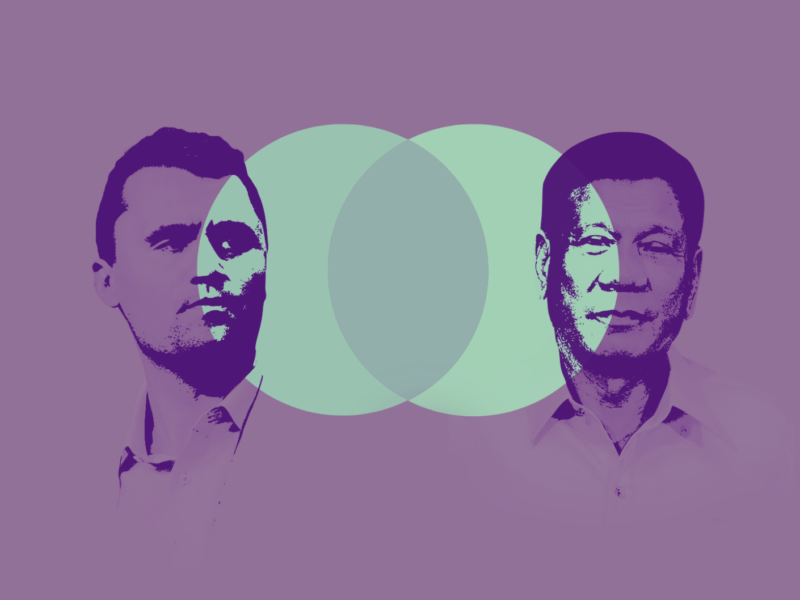Do Filipinos really love unity?
If one were to judge based on the 2022 presidential elections—when “unity” was the chief promise of the tandem that won—the answer may be a resounding “yes.” But if one were to look beyond that, one may be led to ask questions.
For example, why is a country so smitten by the idea of unity so averse to certain expressions of it?
Take a look at the local workforce. As of data from 2020, only 6 percent of employees belong to a labor union. This means that a great chunk of the workforce is bereft of the protection and representation it provides.
To answer this, one must first understand what unions are and what their current place in the country is.
A trade union or labor union is an organization of workers formed to either maintain or improve the conditions of their employment. Usually, they fund their operations through union dues, and their representatives often negotiate with employers on behalf of their members. They also tend to achieve their goals through collective bargaining agreements (CBAs) or industrial actions like strikes.
Think of the Philippine Airlines Employees’ Association (PALEA.) Philippine Airlines once pursued outsourcing and downsizing measures due to the difficulties it faced during the Asian financial crisis. As a result, members of the union—even those not directly affected by these measures—went on strike, disrupting the airline’s operations until an agreement between the union and the company was met.
In other words, unions are a way for employees of a company or an industry to protect and support each other. It’s an expression of unity meant to even the playing field. But the problem is, it isn’t always identified as such. People have even gone out of their way to characterize them as enemies of it.
While guesting in PhilStar’s podcast “Why Naman?” Sonny Africa, executive director of IBON Foundation said that labor unions have declined since the 2000s when they came under attack during the administration of former Philippine President Gloria Macapagal-Arroyo, which ran from 2001 to 2010. “They were called destabilizers and termites of society,” he stated.
Many union figures were also attacked and harassed outright he said, and the examples are all over the internet. Jose “Boots” Servida, a worker-leader of the EMI-Yasaki factory, was shot dead in 2006. Armando Dolorosa, a leader of an agrarian reform group and vice president of the National Federation of Sugarcane, was shot dead in front of his wife and son in 2008. In the same year, another labor leader, Gerardo Cristobal, was killed. This contributed in creating a culture of fear over the idea of unionization.
“That was the time that the attacks on unions [were] severe,” Africa told Philstar.
Their time under the presidency of Rodrigo Duterte was also difficult. Multiple union leaders and organizers have been killed under that administration, and many of them have also been red-tagged (if not openly branded as terrorists) by the many social media pundits clearly aligned with the Duterte camp. It’s an image they created by leveraging the fact that many unions get involved in demonstrations—however righteous their involvements may be.
And the effects of all this are now felt in the workforce.
According to Africa, the attacks suffered by unions has made them unattractive and this led to lower wages currently being experienced by Filipinos. He told Philstar that wage increases were more frequent and more generous in the 1980s and 1990s “when around a third of all workers were in a union.” This is no longer the case. But that doesn’t mean things can’t go back to how they were.
From militant street rallies to quiet collective bargaining tables, the Philippine labor movement has seen a lot over the past two decades. With players ranging from the progressive Kilusang Mayo Uno (KMU) to the conservative Trade Union Congress of the Philippines (TUCP,) and newer groups like SENTRO, it’s a diverse—and sometimes divided—scene. But one thing’s clear: while unions remain crucial for worker rights, they’re also facing some serious challenges.
What unions are doing right
Despite shrinking numbers, unions have managed some key wins. Where unions exist, they almost always secure a CBA. That means better wages, clearer job protections, and more say for workers.
Unions are also part of the bigger fight. Groups like KMU regularly team up with transport, urban poor, and migrant worker groups to protest issues like contractualization (or “endo”) and human rights abuses. This kind of “social movement unionism” helps keep labor issues in the national spotlight.
Other organizations like TUCP and the Federation of Free Workers are more institutional and have taken active roles in government dialogues and policy reform. TUCP, for example, helped push legislation like the Magna Carta of the Poor and OFW protection laws. These groups are proof that unions can still influence the system from the inside.
It’s also worth noting that unions are gradually becoming more inclusive. Nearly half of union members are now women, and younger leaders are stepping into key roles. These are important steps in staying relevant to today’s labor force.
But then, there’s still the elephant in the room: the now low involvement of workers.
This isn’t just an effect of the difficult political environments they’ve been put through. Other factors have also come into play.
Widespread contractualization keeps unions from gaining ground. Many workers are on short-term or agency-based contracts, meaning they can be replaced before they even organize. Union-busting tactics and legal loopholes continue to undercut efforts to build strong worker collectives.
There’s also internal division. According to “Philippines Unionism ― Worker Voice, Representation and Pluralism in Industrial Relations,” published by the Institute of Developing Economies, the labor movement is fragmented—ideologically, politically, and structurally. While groups like NAGKAISA and All-Philippine Trade Unions are trying to bridge the gaps, deep-rooted differences still make unified action a challenge.
And then there’s the change of the labor landscape. According to “Trade Unions in the Philippines: Struggle for Relevance Amidst Globalization and Technology,” by Jan Antoni A. Credo of Silliman University, the “wave of globalization and technological change… has introduced profound structural and organizational changes in firms and businesses and in the domestic economy on the whole.” According to the paper, these changes that were geared at reducing production costs while increasing production, is now forcing unions to adapt in order to be relevant.
And there are a few they alterations they can consider.
What unions can do better
Before anything else, union organizers may benefit from knowing the lay of the land.
Millions of Filipino workers today are freelancers, riders, kasambahays, or sari-sari store owners. Traditional unions rarely reach these people, but that doesn’t mean they’re unorganizable. New organizing models—like associations, cooperatives, or digital networks—can give these workers a voice. Support for pending laws like the Freelance Workers Protection Act is also crucial in this space.
They may also benefit from embracing technology and finding ways to digitally organize.
Young workers practically live online these days and unions need to follow. That means using platforms like social media sites and messaging apps to recruit, educate, and organize. But it also means better data management, secure communication, and creative online campaigns. Digital savvy could be the edge unions need to stay connected and effective in the gig age.
And among the best ways to pursue this is through the help of young leaders and members.
To stay relevant, unions need leaders who reflect more of today’s workforce. That means recruiting and training not just youth, but more women, LGBTQ+ people, and migrant worker leaders. They should be taken in not as tokens, but as the future of the movement. Leadership development programs, mentorship, and democratic structures can help younger members rise in the ranks and innovate from within.
This is a belief shared by the Public Services International (PSI,) a global union federation. “The last PSI congress in November 2017 took the decision to double the number of young workers representative seating in the Executive Board and to bring one to the Steering Committee,” the group wrote. “Our movement needs to adapt and respond to changes in the labor market and ensure that young workers remain an integral part of our unions. Both decisions acknowledge the need for contributions, ideas, and proposals from young workers to better address the new challenges appearing in the world of work and attract more young workers to join the movement.”
Speaking of attracting workers, offering practical, everyday support also helps in this regard. Workers may join unions that actually help them. Legal advice, financial aid, job training, mental health services, access to cooperatives—these are all concrete ways unions can prove their value. The more services a union offers, the more it becomes a daily ally, not just the protest machine that some state forces have made them out to be.
But if state forces do wish to aid them, there is one thing they can do: make it easier for unions.
The current process to start a union in the Philippines is complicated, bureaucratic, and easily undermined by employers. Passing legislation like the Union Formation Act would streamline registration, protect workers from retaliation during organizing efforts, and limit legal delays. Making union formation as straightforward as forming a club should be a top priority.
And when they do get started, unions could benefit from supplying what they actually promise by virtue of their nature: unity.
While ideological differences are real, there’s huge potential for collaboration on issues like wage increases, anti-endo legislation, social protection, and workers’ safety. Building strong, issue-based coalitions (like what APTU is attempting) can allow unions to really influence policy and public discourse. It can also bolster their numbers, turn them into an actual force to be reckoned with, and perhaps even show the merits of lasting “unity.”
Some Filipinos actually hoped for that when they voted during the 2022 presidential elections. Given the state of local politics now however—with the two heads of the state and their powerful families butting heads—it’s a promise they weren’t able to keep.
If unions can, then perhaps the Filipino people can show them just how much they truly love unity.



